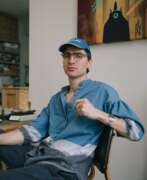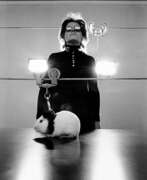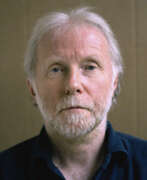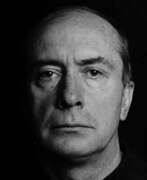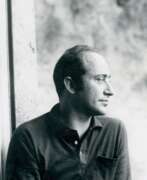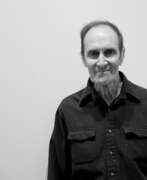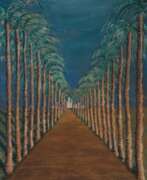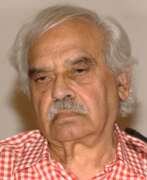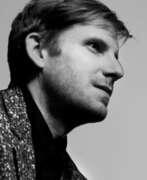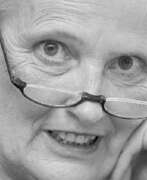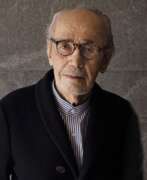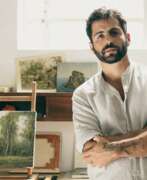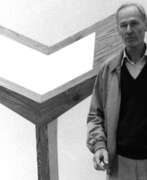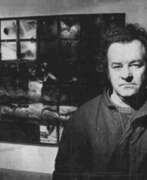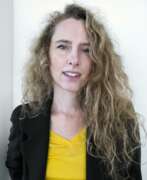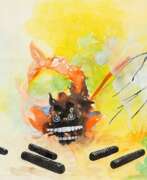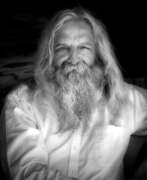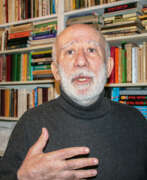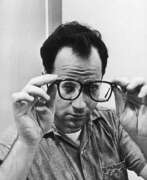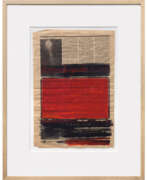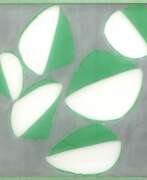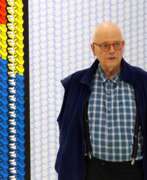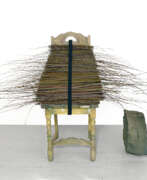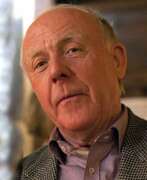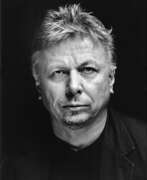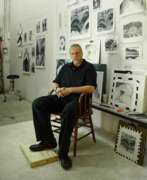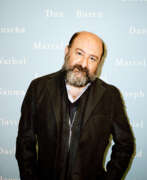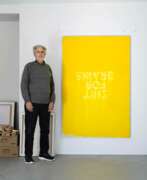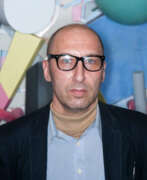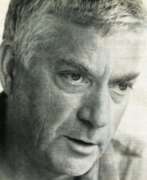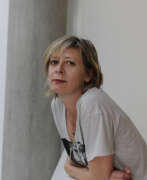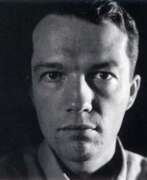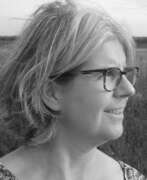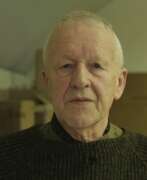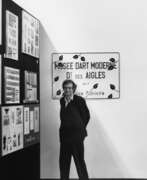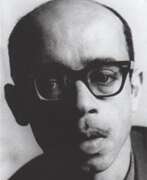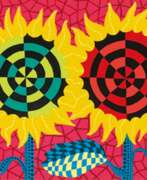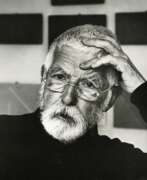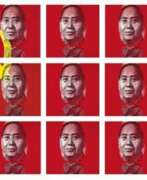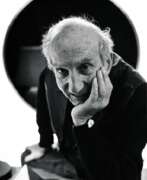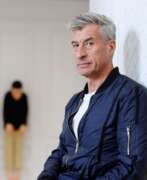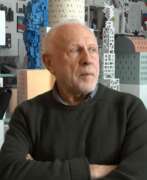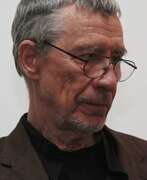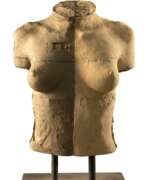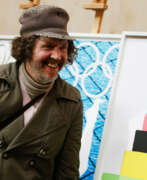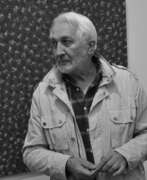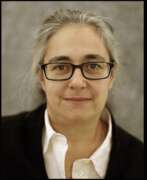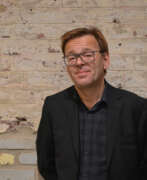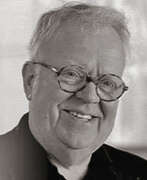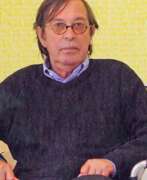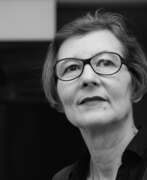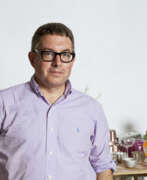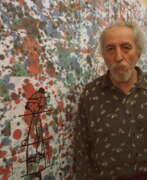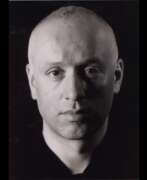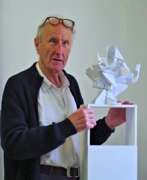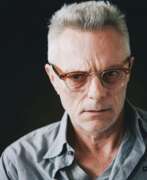Conceptual art
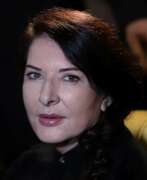

Marina Abramović is a Serbian conceptual and performance artist. Her work explores body art, endurance art, feminist art, the relationship between the performer and audience, the limits of the body, and the possibilities of the mind. Being active for over four decades, Abramović refers to herself as the "grandmother of performance art". She pioneered a new notion of identity by bringing in the participation of observers, focusing on "confronting pain, blood, and physical limits of the body". In 2007, she founded the Marina Abramović Institute (MAI), a non-profit foundation for performance art.
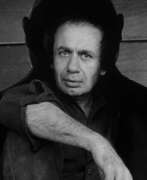

Vito Acconci was an American artist, designer, and architect. He is best known for his pioneering work in the field of performance art and for his provocative installations that explore the relationship between the human body and space.
Acconci received a Bachelor of Arts degree from Holy Cross College in 1962. He later earned a Master of Fine Arts degree from the University of Iowa.
In the late 1960s and early 1970s, Acconci became known for his groundbreaking performance works, which often involved the artist subjecting his own body to various forms of physical and psychological stress.
In the 1980s and 1990s, Acconci shifted his focus to installation art, creating immersive environments that challenged viewers' perceptions of space and their own bodies. He also worked as a designer and architect, creating public sculptures and buildings around the world.
Acconci's work has been exhibited in major museums and galleries worldwide, including the Museum of Modern Art in New York and the Venice Biennale. He received numerous awards and honors for his contributions to contemporary art, including the Skowhegan Medal for Sculpture in 1995.
His legacy as an influential and provocative artist continues to be felt in the contemporary art world today.
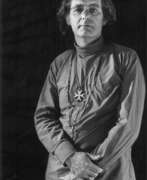

Marc Adrian is an Austrian conceptual artist and filmmaker.
Adrian studied sculpture at the Vienna Academy of Fine Arts, from 1953 he became interested in cinema, kinetics, rhythmic interference, problems of optical structures, etc. Adrian is considered one of the pioneers of film-oriented media art. He specialized in kinetic objects, anti-cinema and computer art.
Marc Adrian has taught at various universities in Europe and lectured to American students.
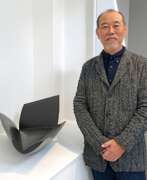

Yō Akiyama (秋山 陽) is a Japanese ceramicist based in Kyoto. He was a late leading figure of Sōdeisha, a twentieth-century avant-garde artist group that sought to redefine understandings of aesthetics and purpose in modern and contemporary ceramics, focusing on sculptural attributes over strict functionality. Akiyama studied directly under Kazuo Yagi, one of the founders of Sōdeisha, for six years. Akiyama later became a professor at Kyoto Municipal University of Arts and Music, where he is currently a Professor Emeritus, having retired in 2018. As an artist, he works primarily with black pottery, a technique that fires clay in low temp, smoky conditions to create a dark effect. His predominantly largescale work is richly textural and abstract, emphasizing the earthy materiality of the work as well as its form.
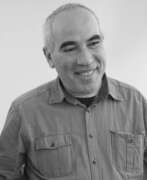

Yuri Albert is a contemporary Russian artist, art theorist and educator; a member of the Moscow conceptualist circle. He currently lives and works in Moscow and Cologne.
Yuri Albert's works are in the collections of major Russian and international institutions.
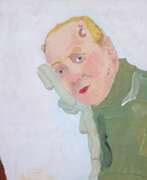

Richard Aldrich is a Brooklyn-based contemporary American conceptual artist and painter who exhibited in the 2010 Whitney Biennial. Aldrich received his BFA degree from the Ohio State University in 1998. Although mostly abstract and casual, Aldrich's paintings also betray a distinctly literary sensibility, even as he targets what he has called the essential "unwordliness of experience." He addresses his own personal history and the way that humans organize information through the formal language of painting, freely citing various aesthetic tropes with humor and irreverence. Aldrich is best known for his loose, abstract compositions, moving freely from gestural mark-making, text-based printing, and cutting the canvas to reveal stretcher bars underneath.
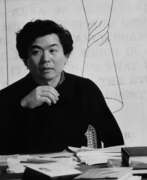

Shusaku Arakawa was a Japanese conceptual artist and architect. He had a personal and artistic partnership with the writer and artist Madeline Gins that spanned more than four decades in which they collaborated on a diverse range of visual mediums, including: painting & printmaking, experimental filmmaking, performance art, and architectural & landscape design.
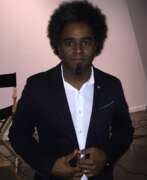

Alexandre Arrechea is a Cuban visual artist. His work involves concepts of power and its network of hierarchies, surveillance, control, prohibitions, and subjection.
For twelve years he was a member of the art collective Los Carpinteros, until he left the group in July 2003 to continue his career as a solo artist. His public art The spectator's participation in the work adds to his contemplation. The work arises out of human actions and reactions in the face of contemporary versions of the worldview already described by Jeremy Bentham in the 18th century. The eye of power watches everything and everyone, and everyone watches everyone else and themselves.
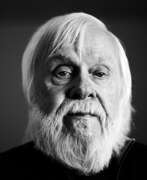

John Baldessari was an American conceptual artist known for his work featuring found photography and appropriated images. He lived and worked in Santa Monica and Venice, California.
Initially a painter, Baldessari began to incorporate texts and photography into his canvases in the mid-1960s. In 1970 he began working in printmaking, film, video, installation, sculpture and photography. He created thousands of works which demonstrate — and, in many cases, combine — the narrative potential of images and the associative power of language within the boundaries of the work of art. His art has been featured in more than 200 solo exhibitions in the U.S. and Europe. His work influenced that of Cindy Sherman, David Salle, Annette Lemieux, and Barbara Kruger among others.
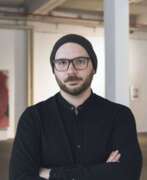

Frank Balve is a German conceptual artist.
He creates paintings, photographs, sculptures, performances and films, and his work is often inspired by literary works, from Dante to the Marquis de Sade. Balve designs his images with paint, builds them from stone or paper, stages them in front of the camera, and puts them into language. In special installations he combines his works to create spaces of experience for the viewer to work on.
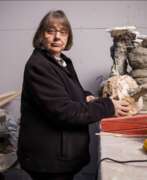

Phyllida Barlow is a British artist. She studied at Chelsea College of Art (1960-63) and the Slade School of Art (1963-66). She joined the staff of the Slade in the late 1960s and taught there for more than forty years. She retired in 2009 and is thus an emerita professor of fine art. She has had an important influence on younger generations of artists; at the Slade her students included Rachel Whiteread and Angela de la Cruz. In 2017 she represented Great Britain at the Venice Biennale.
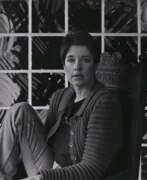

Jennifer Bartlett was an American artist. She was known for paintings and prints that combine the system-based aesthetic of conceptual art with the painterly approach of Neo-Expressionism. Many of her pieces were executed on small, square, enamel-coated steel plates that are combined in grid formations to create very large works.
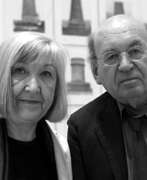

Bernhard (Bernd) Becher and Hilla Becher were German conceptual artists and photographers working as a collaborative duo. They are best known for their extensive series of photographic images, or typologies, of industrial buildings and structures, often organised in grids. As the founders of what has come to be known as the 'Becher school' or the 'Düsseldorf School' they influenced generations of documentary photographers and artists. They have been awarded the Erasmus Prize and the Hasselblad Award.
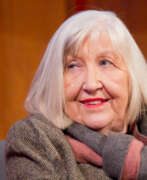

Hilla Becher (née Wobeser) was a German conceptual photographer. Becher was well known for her industrial photographs, or typologies, with longtime collaborator and husband, Bernd Becher. Her career spanned more than 50 years and included photographs from the United States, France, Germany, the Netherlands, Great Britain, Belgium, Switzerland, Luxembourg, and Italy.
Becher, alongside her husband, received the Erasmus Prize and the Hasselblad Award. The Bechers founded the Düsseldorf School of Photography in the mid-1970s.
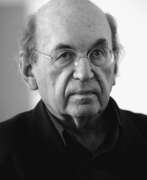

Berndt Becher was a German conceptual photographer. Becher is well known for his industrial photography.
Together with his wife and collaborator Hilla Becher won the Erasmus Prize and the Hasselblad Prize. In the mid-1970s the Bechers founded the Düsseldorf School of Photography.
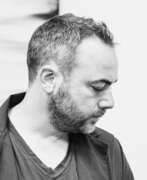

Walead Beshty is an American conceptual artist, photographer, sculptor and writer who lives and works in Los Angeles.
Born in London, Great Britain, he studied at Bard College and received a Master of Fine Arts degree from Yale University in 2002, and holds academic positions at universities across the United States.
Beschty is best known for his work in photography, but his creative interest spans a wide range, including sculpture, painting, installation and video. For example, in one of his popular works, the artist mails a series of glass windows of various sizes in cardboard boxes, and then displays the cracked and broken windows, damaged in transit, over the boxes in which they were packed.
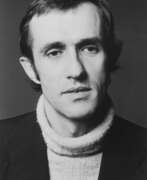

Alighiero Fabrizio Boetti, known as Alighiero e Boetti, was an Italian conceptual artist, considered to be a member of the art movement Arte Povera.
Perhaps best known is Boetti's series of large embroidered maps of the world, called simply Mappa.


Jonathan Borofsky is an American artist known for his public sculptures and installations that explore themes of human consciousness, individuality, and interconnectedness.
Borofsky studied at Carnegie Mellon University and Yale University. In the 1970s, he gained recognition for his conceptual and performance works, which often incorporated elements of language, text, and repetition.
In the 1980s, Borofsky began creating large-scale public sculptures, many of which feature human figures or silhouettes. One of his most famous works is "Molecule Man," a 100-foot-tall sculpture of three interconnected figures located in Berlin, Germany.
Borofsky's work has been exhibited in major museums and galleries around the world, including the Museum of Modern Art in New York, the Centre Georges Pompidou in Paris, and the National Museum of Contemporary Art in Seoul. He has also created public artworks in cities such as New York, Tokyo, and Tel Aviv.
In addition to his art, Borofsky is known for his interest in meditation and spirituality, which he often incorporates into his work. He has published several books on these topics.
Borofsky continues to live and work in Ogunquit, Maine, where he maintains a studio and creates new works of art.
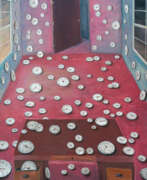

Derek Paul Boyle is a contemporary American visual artist whose work often deals with the anthropomorphism of everyday objects and absurdist interventions.
Boyle received his BFA from Emerson College in Boston and his MFA in Digital and Media Studies from Rhode Island School of Design.
Boyle has exhibited his work nationally and internationally, including exhibitions at the Museum of Modern Art in Cleveland, the Museum of Fine Arts in Boston and the Saatchi Gallery in London. His work is included in the collections of the Whitney Museum of American Art, the Museum of Fine Arts Boston, the Cleveland Museum of Art and others.
In addition to his studio practice, Boyle also teaches art and works as a visiting artist at various institutions, including the Rhode Island School of Design, the School of Visual Arts and the University of Michigan.


Tania Bruguera is an artist and activist who focuses on installation and performance art. She lives and works between New York City and Havana, and has participated in numerous international exhibitions. Her work is in the permanent collections of many institutions, including the Museum of Modern Art and Bronx Museum of the Arts and the Museo Nacional de Bellas Artes de La Habana.
Bruguera's work pivots around issues of power and control, and several of her works interrogate and re-present events in Cuban history. As a result of her artistic actions and activism, Bruguera has been arrested and jailed several times.
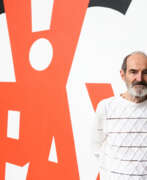

Erik Vladimirovich Bulatov (Russian: Эрик Владимирович Булатов) is a Soviet and Russian avant-garde artist of the XX-XXI centuries. His paintings are an experimental confrontation of modernist style and traditional painting. The main principle of Bulatov's paintings is the confrontation of the real space and the pictorial plane.
Since 1989, Bulatov lived in New York, and in 1992, he moved to the capital of France, where he lives and works to this day, sometimes visiting Russia.
Bulatov's works are in constant demand at auctions of contemporary art, he is considered one of the most expensive contemporary Russian artists. For example, his work "Soviet Cosmos" was sold for about $1.6 million at the Phillips auction.
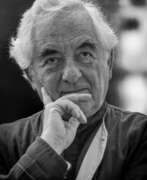

Daniel Buren is a French conceptual artist. He is one of the founders of the art group BMPT. Considered to be one of the most 'expensive' living French artists.
Since 1966, Daniel Buren created an aesthetic form which allowed him to concentrate exclusively on the position of the artwork in space: he focused on a series of alternating white and coloured stripes. This creative strategy became his hallmark.
Buren's striped columns (composition "Two Levels"), installed in 1986 in the courtyard of the Parisian Palais-Royal, which provoked protest from Parisians, later became a prominent landmark in the French capital.


Scott Burton was an American sculptor and performance artist best known for his large-scale granite and bronze furniture sculptures.
Burton's work was aimed at blurring the boundaries between art and functional objects. He challenged the traditional notion of sculpture as an object to be admired from a distance, creating sculptures designed for audience interaction and use. His work often incorporated elements of furniture and architectural design, combining art with the practical aspects of everyday life.
Burton's approach to art was influenced by his interest in minimalism and the conceptual art movement. He believed that art should not be confined within the confines of galleries and museums, but should exist as part of the everyday environment. By integrating his sculptures into public spaces, Burton sought to change viewers' perception of both the artwork and the environment.
Translated with www.DeepL.com/Translator (free version)
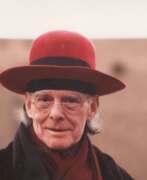

James Lee Byars was an American conceptual artist and performance artist specializing in installations and sculptures, as well as a self-considered mystic. He was best known for his use of personal esoteric motifs, and his creative persona that has been described as "half dandified trickster and half minimalist seer".
Byars' notable performance works include The Death of James Lee Byars and The Perfect Smile, and in terms of multiple sculptures, the many letters he wrote that were composed as decorated sculptures.


André Cadere is a Romanian and French conceptual artist.
Born in Warsaw, Poland, where his father was Romanian ambassador, Cadere emigrated to France in 1967. Living in Paris since 1971, along with Daniel Buren, Neale Toroni and François Morellet, he belongs to the most important figures of French minimalism and concept art of the 1970s. Cadere's work combines a simplified formal sculptural language with a conceptual approach that questions the workings of the art system, a combination that became important to a younger generation of artists in those years.
André Cadere is best known for his series of Barres de bois rond, multicolored wooden bars, begun in 1970 and continued for eight years until his death from cancer at the age of 44. The colors of the bars on these posts form a kind of code. His work not only challenged the traditional art-making practices of the time, but was also exhibited in unconventional places. It is known cases when he uninvited them at exhibitions of other artists, thus attracting attention to his work. For these shenanigans, the artist has been called "Stick Man." Although these works fall between abstract painting and minimalist sculpture, they have been an integral part of Cadere's performances and interventions.
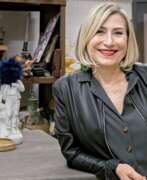

Carmen Calvo, full name Carmen Calvo Sáenz de Tejada, is a Spanish conceptual artist and sculptor.
Carmen Calvo is one of the most representative Spanish conceptual artists of our time. She studied at the School of Arts and Crafts and then at the School of Fine Arts of Valencia, worked in a ceramic factory and since then always incorporates fired clay in her plastic compositions. The artist also works in scenography using photography and other, very diverse formal, technical and thematic resources.
In 2013, Carmen Calvo was awarded the National Award for Plastic Arts by the Ministry of Education, Culture and Sport, and in 2014 she was appointed Academician of the Royal Academy of Fine Arts of San Carlos de Valencia.


Piero Pizzi Cannella is an Italian artist and painter living and working in Rome.
Cannella is known for his conceptual works, he became part of the New Roman School. The artist's continuous research has led him to create cycles of works on various subjects: for example, Turkish dresses, jewelry, flowers, furnishings, all in isolation from the human being.
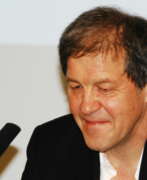

Ernst Caramelle is an Austrian artist. He is known for his conceptual art, which often involves the use of painting and drawing as a means of exploring the relationship between perception and representation.
Caramelle studied at the University of Applied Arts in Vienna and later taught at the Academy of Fine Arts Vienna. His work is characterized by a playful approach to art-making, often blurring the boundaries between painting, drawing, and installation.
Caramelle's work often involves the use of trompe-l'oeil techniques and other visual illusions, inviting viewers to question their perception of the art object and the space in which it is displayed. He frequently incorporates architectural elements into his work, creating site-specific installations that engage with the surrounding environment.
Caramelle has exhibited his work internationally, including at the Venice Biennale, the Documenta in Kassel, and the Museum of Modern Art in New York. He has also been awarded numerous awards and honors, including the Grand Austrian State Prize for Visual Arts in 2013.


Enrico Castellani was an Italian artist. He was active in Italy from the early 1960s, and associated with Piero Manzoni and Vincenzo Agnetti. Castellani is known for his "paintings of light". He studied at the Ecole Nationale Superieure in Belgium, then settled in Milan. Castellani collaborated with artists such as Getulio Alviani, Piero Manzoni, and others. In 2010 he received the Praemium Imperiale for painting.
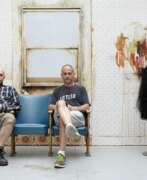

Jake Chapman, born Iakovos Chapman, is an English conceptual artist who works almost exclusively with his older brother Dinos Chapman. Together they are known as Jake & Dinos Chapman and became famous as members of the Young British Artists, brainchild of media mogul and collector Charles Saatchi. The brothers usually create works using plastic models or fibreglass mannequins, which often cause scandal.
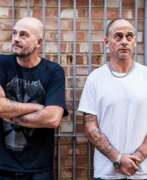

Dinos Chapman (born Konstantinos Chapman) is an English conceptual artist who almost always works with his younger brother Jake Chapman. Together they are known as Jake & Dinos Chapman and became famous as members of The Young British Artists, brainchild of media mogul and collector Charles Saatchi. The brothers usually create works using plastic models or fibreglass mannequins, which often cause scandal.
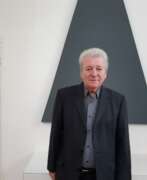

Alan Charlton is a British conceptual artist living and working in London.
Alan studied at Camberwell School of Art and the Royal Academy School, and from the very beginning of his artistic journey, since 1969 he has worked with only one color - gray. For Charlton, it is the most important as well as emotional color in existence, being, for example, the color of melancholy. "I am an artist who makes a gray picture" - this principle he follows all his life.
Alan Charlton creates simple, monochromatic gray abstractions based on rectangular shapes placed in space in a planned way. His conceptual works, uniformly painted in different shades of gray, often consist of simple geometric shapes broken down into modular elements.
Charlton's work has been exhibited at the Stedelijk Museum in Amsterdam, Castello di Rivoli in Turin and the Tate in London.


Marieta Cirulescu is a Romanian-German artist known for her abstract and conceptual paintings. She studied at the Academy of Fine Arts in Bucharest and at the Academy of Fine Arts in Nuremberg, Germany.
Cirulescu's work is characterised by calm colours and minimal compositions, often featuring repeating patterns and forms reminiscent of organic forms and structures found in nature. She is interested in the interplay of the organic and geometric, and her works often evoke a sense of movement and growth.
Cirulescu has exhibited her work extensively in Europe and the United States, including exhibitions at the Museum of Modern Art in Frankfurt, the Kunstmuseum Bonn and the New Museum in New York. She was also included in the Romanian pavilion at the 2013 Venice Biennale.
Cirulescu is the recipient of numerous awards and grants, including the Villa Romana Prize in 2004 and the Berlin Senate Fellowship in 2009. She currently lives and works in Berlin.
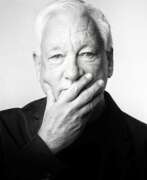

Michael Craig-Martin is an Irish-born contemporary conceptual artist and painter. He is known for fostering and adopting the Young British Artists, many of whom he taught, and for his conceptual artwork, An Oak Tree. He is Emeritus Professor of Fine Art at Goldsmiths. His memoir and advice for the aspiring artist, On Being An Artist, was published by London-based publisher Art / Books in April 2015.
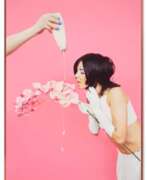

Alex Da Corte is an American conceptual artist who works in painting, sculpture, installation, and video. Da Corte often uses surreal imagery and everyday objects in his practice and explores ideas of consumerism, pop culture, mythology, and literature. He has shown internationally at Bodega, Gió Marconi, Josh Lilley Gallery, Maccarone, Herning Museum of Contemporary Art, Massachusetts Museum of Contemporary Art, and Institute of Contemporary Art. Da Corte has worked on a number of collaborative projects with other visual artists, writers, and musicians including Jayson Musson, Dev Hynes, Sam Mckinniss, and Annie Clark. In February 2021, his works were selected for inclusion in the Metropolitan Museum of Art's roof garden collection.
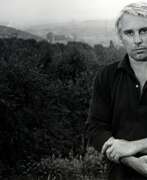

Karl Fred Dahmen is a German artist, one of the most important representatives of German post-war art and the Informel movement. In 1967 he took up the post of Professor of Fine Arts at the Munich Academy.
He painted expressive abstract pictures with a tectonic structure, and since the mid-1950s, relief paintings and collages on the damage to the local landscape caused by open-pit mining. Later in Dahmen's oeuvre, glazed object boxes appear, recounting the impressions of his daily working life.


Hanne Darboven was a German conceptual artist known for her large-scale installations, drawings, and writings that explore the intersections of mathematics, language, and time.
Darboven studied at the Hochschule für Bildende Künste in Hamburg. In the 1960s, she became associated with the Conceptual Art movement, creating works that often involved systems of numerical and textual notation.
In the 1970s, Darboven began to produce her signature installations, which combined writing, drawing, and found objects to create immersive environments that explored complex systems of meaning and structure. One of her most famous works is "Kulturgeschichte 1880-1983", a monumental installation consisting of 1,590 framed sheets of paper, each containing a series of numbers, letters, and symbols that chart the course of modern history.
Throughout her career, Darboven continued to explore the relationship between language, numbers, and time, often drawing inspiration from her own life and experiences. She exhibited her work widely in Europe and the United States, and was the subject of numerous retrospectives and solo exhibitions.
Her legacy as a pioneering conceptual artist continues to be recognized and celebrated by the art world today.
.
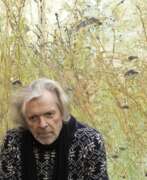

Jiří David is a contemporary Czech artist working in various techniques, including painting, sculpture, installation and photography. Co-founder of the art group Tvrdohlaví . His most famous media work is the neon heart over Prague Castle at the end of the last term of President Václav Havel.
Jiří David studied at the Prague Academy of Fine Arts. His work is characterised by a conceptual approach and a critical engagement with art history and social issues. He often creates large-scale installations that engage the viewer and explore the relationship between art and its audience.
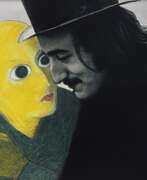

Gino De Dominicis was an Italian artist.
Controversial protagonist of Italian art after the Second World War, he used various techniques and defined himself as a painter, sculptor, philosopher and architect. His work tends to become independent of both fashions and neo-avant-garde groups. Therefore, it cannot be framed in a specific artistic current: neither in Arte Povera, nor in the Transavanguardia, nor in the conceptual art, which rejected.
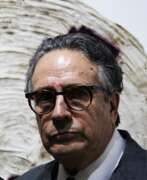

Juan Manuel de la Rosa is a painter, engraver, and ceramicist known for his works on handmade paper. He studied lesser-known techniques for painting and papermaking from Japan, Egypt, Fiyi and France; his handmade paper is typically made of linen, cotton, or hemp. With these traditional approaches, he creates layers and adds new dimensions to his artworks.
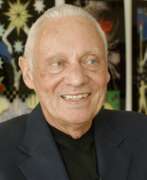

Ugo Dossi is a German conceptual artist.
Typical of his work is the use of forms of representation of the infinite, which lead the mind to the perception of the infinite and incomprehensible, which lies behind everything.
His installations have been shown twice at Documenta (Documenta 6 and Documenta 8), the Venice Biennale (1986 and 2011), Paris (1975) and Buenos Aires (2000) as well as numerous solo exhibitions in international museums and institutions.
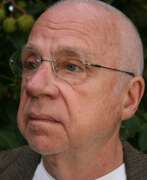

Peter Dreher was a German artist and academic teacher. He painted series of landscapes, interiors, flowers and skulls, beginning his series Tag um Tag guter Tag in 1974. As a professor of painting, he influenced artists including Anselm Kiefer. His works have been exhibited internationally.
